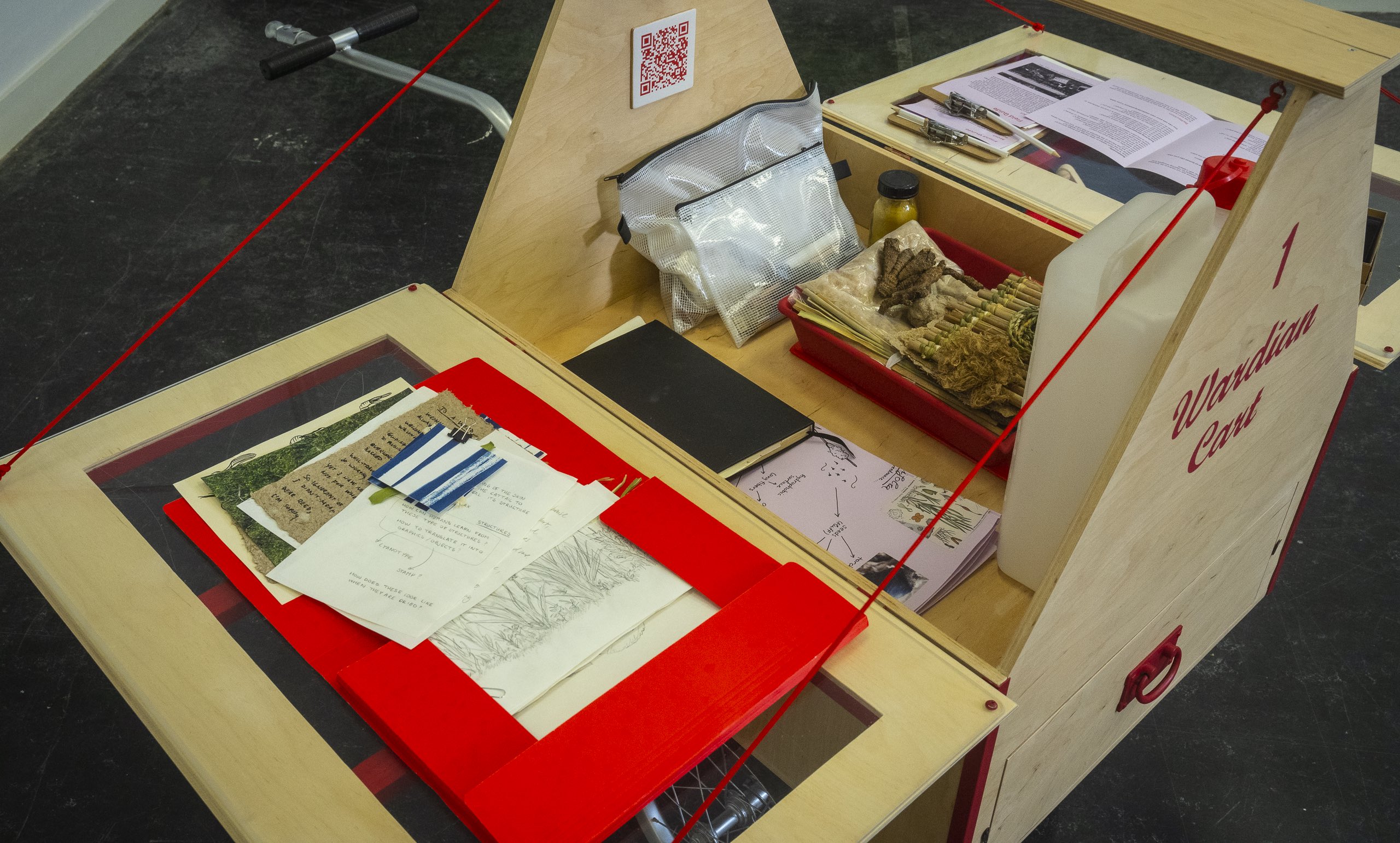Unlearning botanical narratives
Cattail Gatherings
–
Nina Škerjanc
Cattail Gatherings
–
Nina Škerjanc

Natural history museums such as Naturalis play a key role in representing botanical knowledge, and by doing so, mediate our relationship with plants. Plants are categorized through scientific taxonomies and systems and are often presented as preserved and isolated specimens in pots or herbarium sheets. These established systems of botanical knowledge and representation maintain the nature/culture divide.
How does that affect the way we live and relate to culture and nature? How can we imagine different ways of looking at and knowing about plants beyond dominant ways of knowing? How can botanical heritage be preserved, maintained, and experienced in ways which contribute to healing our relationship with plants? By making a Wardian cart, I built a traveling research station that brings together people and practices that center on plants and their relations to their local environments.




The cart, based on the colonial botanical artifact, includes dualisms in the discussion on colonial history. Cattail Gatherings is a series of workshops, facilitated through the research station, during which ideas and experiments are developed and shared while being with and thinking through the weeds called 'cattails'. In these gatherings, we look at the cattail not as a specimen but as a plant with stories, to re-frame botanical heritage through embodied and experiential knowledge.

In my perspective, people and plants hold stories that are intentionally or unintentionally connected to natural or cultural heritage. This motivated me to experiment with ways of breaching the gap between nature and culture in order to better understand, how these dualisms and hierarchies came to be, how they affect our relationship with the world, and how we could potentially build different understandings of ‘nature’. With that motivation, I engaged with human and non-human communities in my locality in order to co-create and share stories, and experiment with ways of knowing and being that are urged by the social and ecological challenges we are facing today. At the same time, I engaged makers and thinkers to come together to share their practice and research in the local context in which they create.